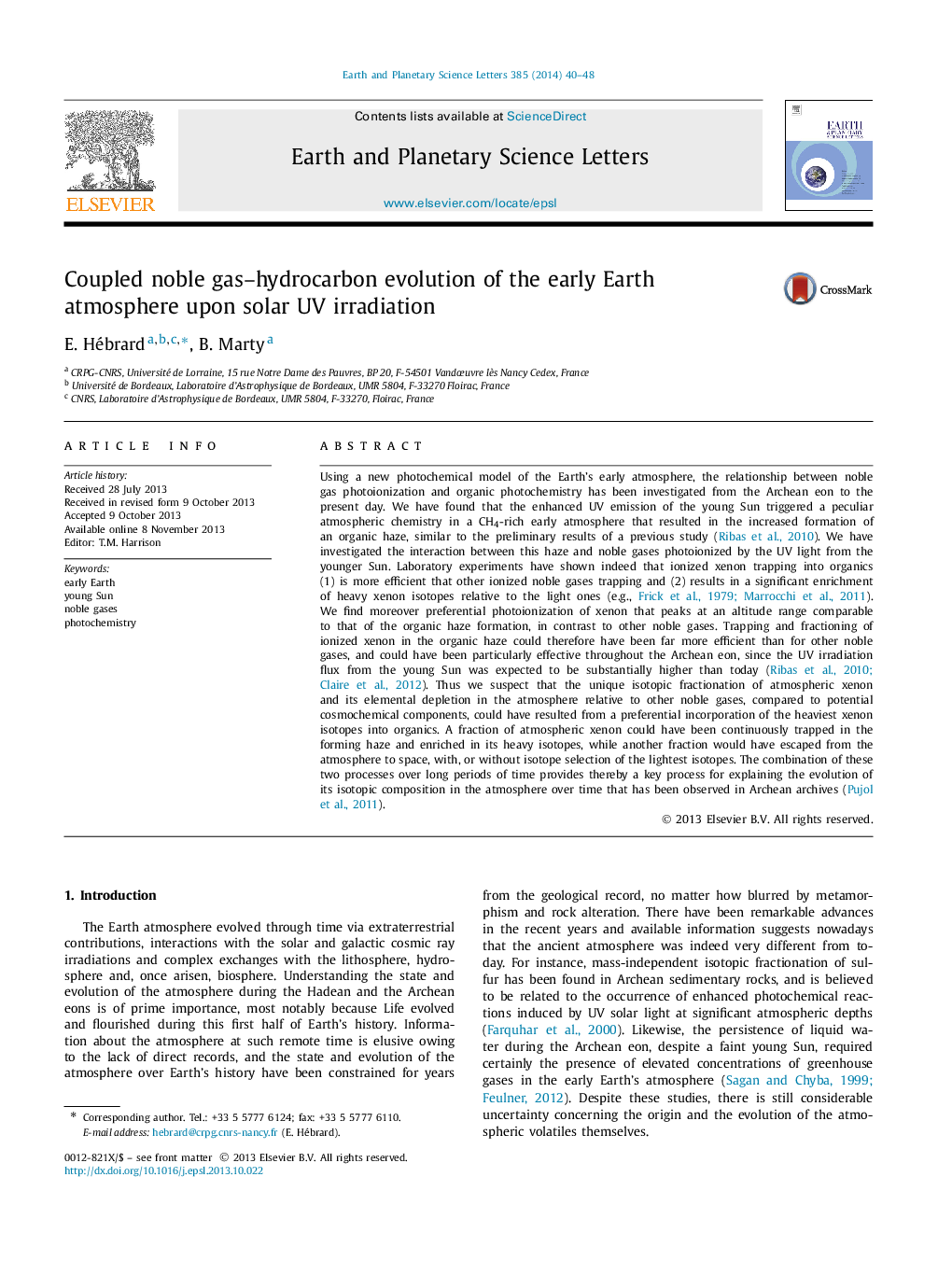| کد مقاله | کد نشریه | سال انتشار | مقاله انگلیسی | نسخه تمام متن |
|---|---|---|---|---|
| 6429871 | 1634771 | 2014 | 9 صفحه PDF | دانلود رایگان |

- Modeling of the noble gas photoionization and the organic photochemistry in the early Earth atmosphere.
- The enhanced UV irradiation of the young Sun triggered a peculiar atmospheric chemistry in the Archean.
- Noble gases photoionization and organic haze formation were more efficient.
- Xenon photoionization peaks at an altitude range comparable to that of the organic haze formation.
- Trapping of photoionized xenon into the organic haze was more efficient than for the other noble gases.
Using a new photochemical model of the Earthʼs early atmosphere, the relationship between noble gas photoionization and organic photochemistry has been investigated from the Archean eon to the present day. We have found that the enhanced UV emission of the young Sun triggered a peculiar atmospheric chemistry in a CH4-rich early atmosphere that resulted in the increased formation of an organic haze, similar to the preliminary results of a previous study (Ribas et al., 2010). We have investigated the interaction between this haze and noble gases photoionized by the UV light from the younger Sun. Laboratory experiments have shown indeed that ionized xenon trapping into organics (1) is more efficient that other ionized noble gases trapping and (2) results in a significant enrichment of heavy xenon isotopes relative to the light ones (e.g., Frick et al., 1979; Marrocchi et al., 2011). We find moreover preferential photoionization of xenon that peaks at an altitude range comparable to that of the organic haze formation, in contrast to other noble gases. Trapping and fractioning of ionized xenon in the organic haze could therefore have been far more efficient than for other noble gases, and could have been particularly effective throughout the Archean eon, since the UV irradiation flux from the young Sun was expected to be substantially higher than today (Ribas et al., 2010; Claire et al., 2012). Thus we suspect that the unique isotopic fractionation of atmospheric xenon and its elemental depletion in the atmosphere relative to other noble gases, compared to potential cosmochemical components, could have resulted from a preferential incorporation of the heaviest xenon isotopes into organics. A fraction of atmospheric xenon could have been continuously trapped in the forming haze and enriched in its heavy isotopes, while another fraction would have escaped from the atmosphere to space, with, or without isotope selection of the lightest isotopes. The combination of these two processes over long periods of time provides thereby a key process for explaining the evolution of its isotopic composition in the atmosphere over time that has been observed in Archean archives (Pujol et al., 2011).
Journal: Earth and Planetary Science Letters - Volume 385, 1 January 2014, Pages 40-48